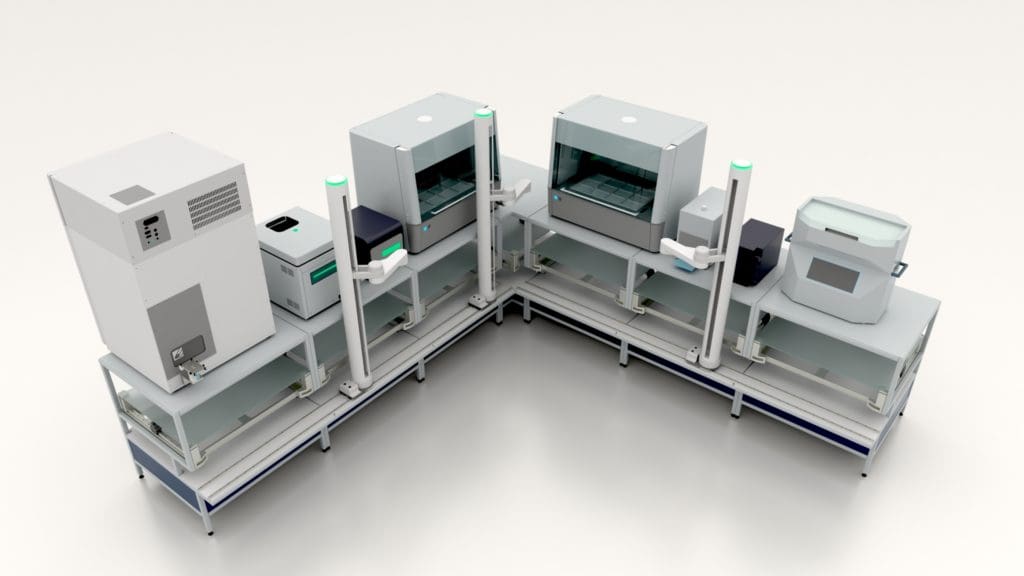

SLAS Europe 2022: 5 key trends in lab automation this year
Our round up of the latest innovations and trends in the lab automation space in 2022
After being forced online for the last two years, SLAS Europe was back with a bang in Dublin in 2022. And the Automata team was on the ground.
In between live demos of our lab automation solutions – and a pint of Guinness or two – we spoke with some of the individuals who are breaking ground in the lab automation space, and heard from a number of fascinating thought leaders about the industry today.
So, in this article, we’ve rounded up five of the (biggest) key trends we uncovered at the event.
1. Working from home: finally made possible with automation?
One key discussion point at SLAS was the possibility of lab workers working remotely.
COVID-19 forced millions of jobs to go fully remote, highlighting the fact that many businesses, and even government departments, could be run from home offices and bedrooms.
However, labs – notoriously slow to digitise – did not tend to follow this trend.
At SLAS Europe, a number of speakers theorised that greater lab automation will make it possible for labs to move to this more flexible model of work. With new technology, such as sensors for humidity and temperature, supporting remote monitoring of assays, hybrid working will become a possibility for the labs of the future.

2. To make the most of new technology, labs are doing more with their data
Cool technology simply cannot work without the right data. Yet in many labs today, paper is still being used to track the huge swathes of the data they generate.
This is a challenge made even harder when labs are using a number of different vendors and instruments, with data being siloed between them. Additionally, there remains a culture of scientists not wanting to share data for fear of idea theft.
In the roundtable session, ‘Powering the Standardisation, Sharing and Reuse of Data to Become a Data Driven Company’, the key tips for tackling this were:
- It’s critical to set a data strategy to build a strong data foundation
- There is a need for the scientific community to build a culture of ‘data sharing’
- Data needs to be Findable – Accessible – Interoperable – Reusable (FAIR)
3. Think bigger with lab automation: making automated equipment work harder by parallelising and linking instruments
On day one, our Head of Application Engineering, Mathew Keegan, delivered a talk: ‘Lab automation. Think bigger.’
Many labs get a single piece of automated equipment, most commonly a liquid handler, that tackles a specific process in the workflow – and consider themselves to have automated their process. On the other hand, Mathew argued that your automated equipment can work a lot harder than this.
In his talk, he shared his engineering insights into how parallelising workflows and linking automation instruments can help labs maximise the ROI of their automation.
Learn more about making your automation equipment work harder
4. Cell culture automation solutions on the increase
Noticeable at the event was the increasing number of automated solutions for the processes around cell cultures.
Cell culture labs are notoriously labour-intensive, with lab workers clocking in over evenings and weekends to conduct the repetitive processes involved in cultivating cells. With automation, manual workloads can be significantly reduced, and the quality of results improved as a result.
Learn more about automating cell cultures

5. Modular automation maximising efficiency and making the most out of a lab’s footprint
Finally, one of the strongest themes of the event was the innovation taking place in modular automation solutions.
With many labs having constrained footprints, the bulky instruments of the past can be a struggle to fit into their space. Modular automation stations, on the other hand, can be built out in a modular fashion. This allows labs to flexibly add or remove equipment depending on their changing needs, assay development, and also enables the future expansion of labs.
Learn more about modular lab automation
More on events

Join our team in Philadelphia for Future Labs Live USA. From 30…
Read more Future Labs Live USA
Team Automata were at SLAS Europe 2024. BOOK A CHAT WITH US…
Read more SLAS Europe 2024
We were at the Future Labs, Automation & Tech Summit; thanks for…
Read more Future Labs, Automation & Technology